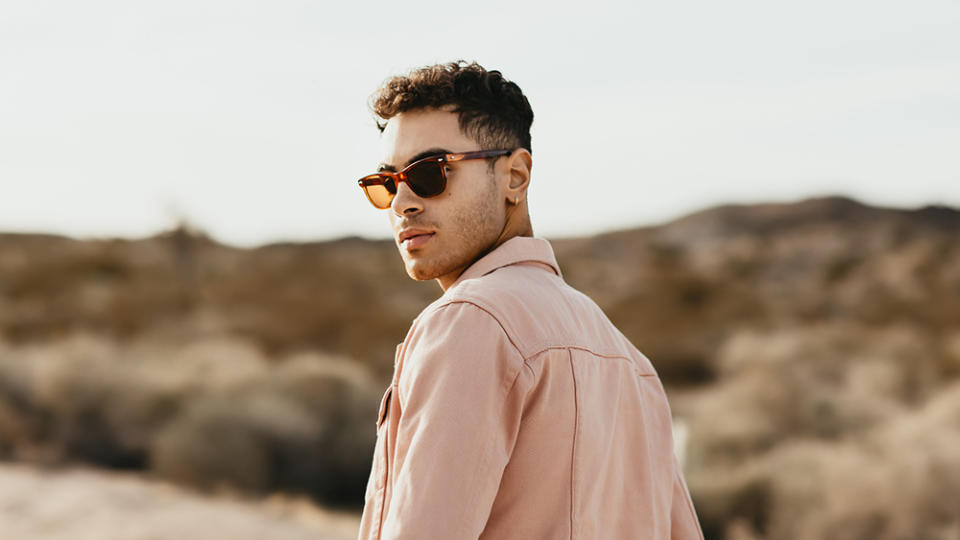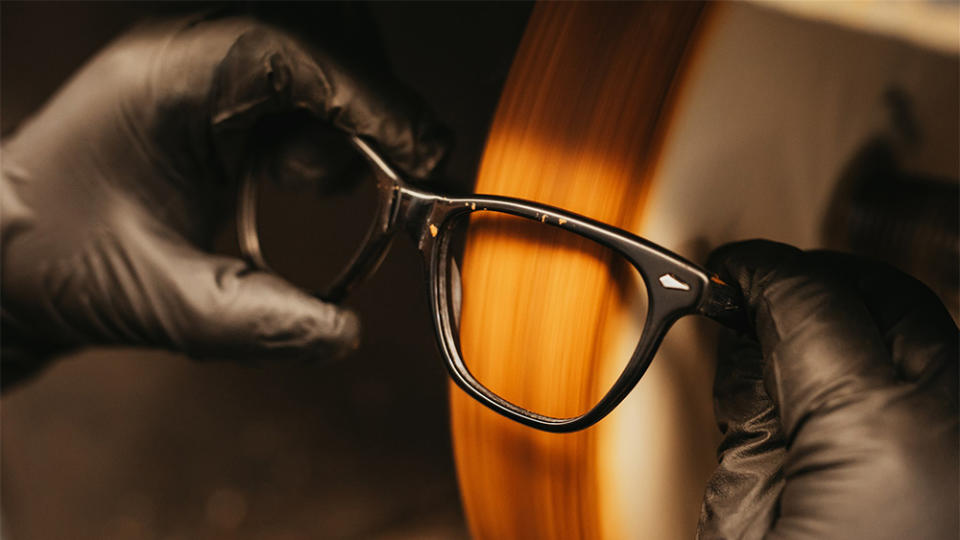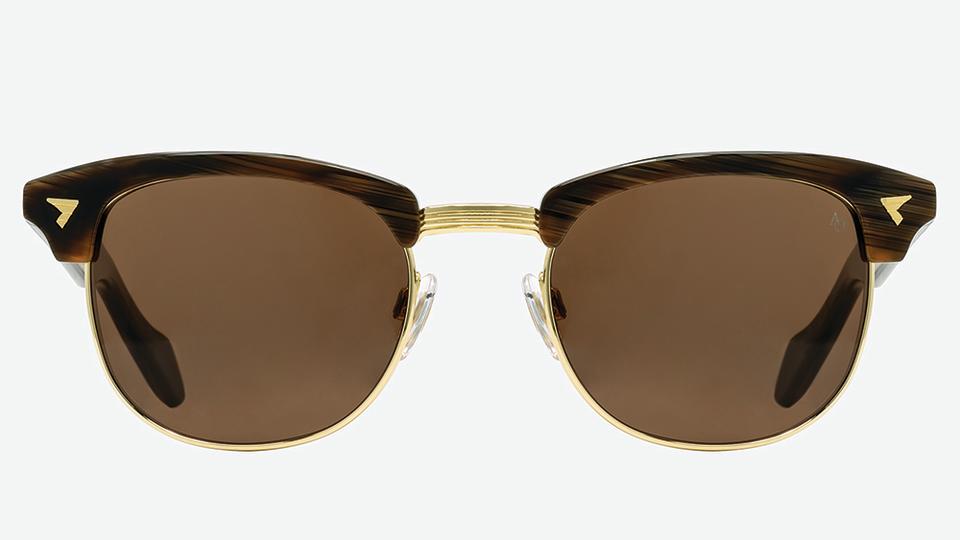The All-American Maker of JFK and Malcolm X’s Iconic Sunglasses Is Back

Even if you aren’t familiar with American Optical, you likely known the brand’s work. It’s frames were JFK and Malcolm X’s favorites, they co-starred with Robert De Niro in Taxi Driver and, like Omega’s Speedmaster, were the first instrument of their kind to make it to the moon. The homegrown, handmade eyewear maker may have faded into obscurity but now it’s back and ready to reclaim its heritage.
Even in the American Optical’s mid-century heyday, the brand was already over a hundred years old. In 1833, jeweler William Beecher began crafting silver spectacles and by the end of the 19th century, the Massachusetts-based company was producing frames and lenses for millions of Americans. Making eyewear widely available, and kitting out US pilots, soldiers and sports champions, AO became a household name. Yet in recent decades, it had dwindled from the largest eyewear company in the world to a skeleton operation, producing just two metal frames, Original Pilot and the General, and none of the acetate models.
More from Robb Report
Ray-Ban Teams up With Scuderia Ferrari F1 Drivers on Two Pairs of Track-Ready Sunglasses
Mr P. Teams up With London Eyewear Brand Cubitts on a Line of Summer Sunglasses
Delta Will Unveil New Luxe Lounges for Premium Fliers in 2023

American Optical
Few industries have consolidated more over the years than eyewear. It’s an open secret that almost all prominent brands outsource to a single European behemoth, making glasses manufacturing one of the most homogeneous in fashion. Any brand making its own frames today is swimming upstream, and making them in America doubles the challenge because the machines and skills needed have grown rusty. To renovate the brand, any consultant would have advised AO to move manufacturing overseas while talking up its storied past. Instead, AO doubled down on its roots. Owner Allen McKinley turned to Scott Shapiro, an industry veteran who has spent the past decade rebuilding acetate frame production in the US at his family company Europa in Chicago.
“Our factory was the only one producing acetate,” Shapiro tells Robb Report, explaining the scale of the challenge. “The reason it’s really hard to make these things is that all of the network has been lost. In Wenzhou [China], everything you need is there: the raw material, the acetate, the hinges, the nose pads, the décor, plus when you want to hire you can find people who have done this before. That’s not true in Chicago; every single person we hire has to be trained and none of the machinery can be sourced here. When we opened our factory, we ordered all the machinery from Europe and Asia. Nothing came with English instructions because no English speaker has ever used them before.”

American Optical
Piece by piece, the team relocated and restarted production of AO’s historic models in Chicago. Chief among the AO catalog remains the Original Pilot, derived from AO’s 1958 Flight Goggle 58, the aviator favored by airmen for decades (“the only sunglasses authorized for inflight wear by Navy aircrews,” according to one pilots’ magazine). Equally iconic is the relaunched Saratoga, out of production for decades, now available in six colorways and two sizes. This charismatic, gently curved acetate model was JFK’s favorite, seen in countless poolside and boating photos. “A lot of people think they’re Wayfarers, but they’re not!” Shapiro laughs.
The most surprising might be the Oxford, a combination steel-acetate frame with a circular lens and futuristic cutout details. “It’s very modern looking, edgy almost,” Shapiro says, “but in fact it’s almost an exact replica to an AO style from the 1930s. It’s amazing how you can take something very old and, with a couple of slight tweaks, it can be totally new.” The latest release is the unmistakable Sirmont, a 1950s browline model favored by both Lyndon B. Johnson and Malcolm X. It launched a month ago, after extensive R&D to modernize the imposing style to comfortably suit the larger face shapes of this century.

American Optical
The relaunched AO is a celebration of mid-century style, from modernist acetates to muscular aviators with proprietary Skymaster lenses. All these frames have a distinct gravity, drawn from the American icons who wore them in an earlier incarnation. But the return of AO is also premised on a renaissance of America’s eyewear manufacturing talent and tradition: not just pulling lost styles out of the archive but relearning how to make them, as if for the first time.
With its portfolio of classic shades starting to fill out, AO is now looking towards the launch of a new optical collection in 2023. “We’re incorporating some sunglasses styles and some new designs,” Shapiro says, “but always following the same model: American Optical heritage, in a new way for a modern audience.”
Best of Robb Report
Sign up for Robb Report's Newsletter. For the latest news, follow us on Facebook, Twitter, and Instagram.

